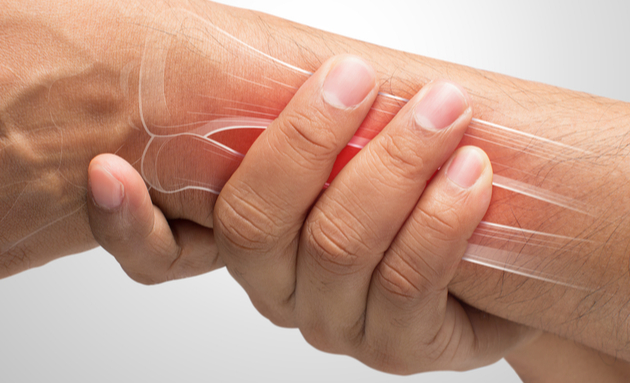7 Things You Need To Know About Rheumatoid Arthritis (RA)

Rheumatoid arthritis is an autoimmune disorder that occurs when the immune system mistakenly starts attacking the body’s tissues.
Unlike osteoarthritis, that causes the wear-and-tear of joints, rheumatoid arthritis affects the lining of the joints, causing painful swelling and inflammation. This eventually results in bone deterioration and joint deformity. While people may be aware of the degradation of bone and joint health arising from any type of arthritis, what they don’t realise is that rheumatoid arthritis can damage other parts of the body as well.
Here are 7 things you need to know about Rheumatoid Arthritis
1. You Are Not Too Young To Have Rheumatoid Arthritis
Rheumatoid arthritis is considered to be an old person’s disease by many. Although this might be true for osteoarthritis, RA can strike much younger, and can even affect children and teens. Juvenile rheumatoid arthritis (JRA), which is the most common type of RA in children, affecting kids who are 16 years or younger. It is characterised by the same symptoms as adult RA, which includes inflammation, swelling, and soreness in the joints, although many children with JRA do not complain of joint pain. In adults, RA starts showing signs between the ages of 30 and 60.
2. Rheumatoid Arthritis Flares Can Occur All Over Your Body

Many people are unaware that rheumatoid arthritis is more than just joint pain. It is a systemic inflammatory autoimmune disease that causes your body to mistakenly attack healthy joints and leads to widespread inflammation. It affects your whole body, including the eyes, skin, kidneys, and heart. The pain and discomfort from an RA flare-up can affect one’s sleep, leading to extreme fatigue and lack of energy. In some cases, RA flare-ups can also cause flu-like symptoms resulting in short-term fever, sweating and lack of appetite.
3. Women Are More Prone To Rheumatoid Arthritis Than Men
Rheumatoid arthritis tends to affect women at a younger age than men. The reason for this is still not entirely clear, but most researchers attribute this to genetic predisposition, fluctuating hormones, a difference in immune systems, and environmental factors, such as stress. The common window for the onset of RA is between ages 20 and 60 for women. Men do get rheumatoid arthritis, though often later in life. Women are approximately three times more likely to be diagnosed with RA than men.
4. It Can Affect Your Bone Health

At the onset of rheumatoid arthritis, the inflammation causes severe pain, swelling, and destruction of cartilage. However, cartilage is not the only tissue that gets affected. The effects of inflammation and the drugs used to control inflammation can also destroy bones, leading to osteoporosis. This leads to loss of bone mineral density that can increase the risk of fractures. Even if one has control over their RA, it can result in secondary degenerative osteoarthritis in weight-bearing joints such as the knees, ankles, and hips. Women especially are at a higher risk of developing bone-related issues due to RA.
5. Your Diet Can Ease The Pain
An anti-inflammatory diet that is rich in omega-3 fatty acids, antioxidants, and fibre may help with the symptoms associated with rheumatoid arthritis. Good sources of omega-3’s include fatty fish (mackerel and sardines), almonds, and walnuts. Foods high in antioxidants can include strawberries, dark chocolate, spinach, and rajma. Fibre is also important for RA as it has shown to reduce inflammatory responses. Whole-grain foods, fresh vegetables and fruits are healthy sources of fibre. Make sure to avoid trigger foods, such as processed carbohydrates and saturated or trans fats (ghee and vanaspati).
6. Diagnosing Rheumatoid Arthritis Can Be Tricky

Rheumatoid arthritis can be difficult to diagnose as the early signs and symptoms are similar to those of other diseases. Often, it doesn’t show up in general blood tests or checkups and requires a sound understanding of the physical symptoms before the doctor can prescribe specific tests. These tests can help detect the presence of rheumatoid factor (an antibody) and anti-CCP antibodies, often used to confirm an RA diagnosis. The doctor may also recommend X-rays to help track the progression of rheumatoid arthritis in the joints. An MRI and ultrasound can further help the doctor judge the severity of the condition.
7. Staying Active Can Help You Manage Rheumatoid Arthritis
Low-impact activities, like brisk walking or swimming, and gentle stretching have shown to help reduce RA pain and protect bone health. It also helps to maintain joint mobility and muscle strength which can, in turn, relieve pain, improve mood, and keep your weight in check. However, during flare-ups, when inflammation gets unbearable, it’s best to rest your joints. When the inflammation eases, it’s a good idea to exercise. But before undertaking any activity, speak to your doctor and devise an exercise plan accordingly.
Rheumatoid arthritis affects everyone differently. For some, joint symptoms happen gradually over several years, for others it may come on more quickly. Although there is no cure for it, early, aggressive treatment does help prevent disability and increase one’s chances of remission.






